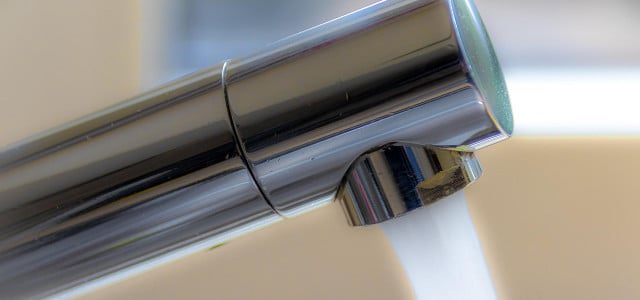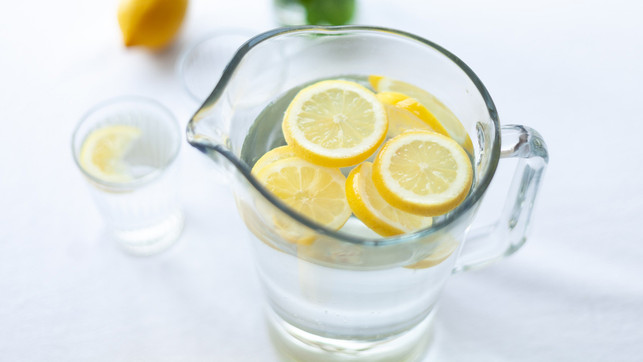
Most of the time it takes a moment to get cold, fresh water out of the tap in the morning. Often it is said that the water should be run first. But is that really necessary? We have tips and important information.
![]()
It is a known tip to let tap water run for a few seconds before drinking until fresh, cool water comes. The reason for this measure: bacteria (legionella) could have increased in the water pipes. With a view to the water crisis caused by climate change, however, you shrug when many liters of water disappear unused in the spout.
We asked: Should you let the water run in the morning? Does the rule still make sense?

First important to know:
- Tap water is the best thirst quencher – and drinking a lot is important, not only on hot days or when we do sports.
-
If you drink tap water, the climate and the environment protects: “The climate load caused by mineral water in Germany is almost 600 times higher than with tap water,” explains the consumer center.
- Water from the line is about 100 times cheaper than the bought mineral water – and usually also recommended.
- You can drink tap water almost anywhere in Germany in every season.
Let the tap water run briefly before drinking: Is that necessary?
Yes, the water suppliers recommend, the Federal Environment Agency and the Consumer Center.
The consumer center recommends If no water has flowed through the line for several hours, you should let the water run until it comes out of the tap.
Because the so -called “stagnation water” (this is water that stood in the lines for several hours or days) is no longer fresh: fabrics from the fittings and lines can settle in the water, germs and bacteria can multiply.
For this reason:
“We recommend that we run the water until it is no longer colder. Depending on the floor and thus the route that the water has to cover from the pipe network to the tap, this can be 15 to 60 seconds ”,”,
Astrid Hackensesch-Rump from the Berlin water companies to Utopia told. This is particularly important when preparing baby food.
Important: If you come home after your vacation, you should first turn your roosers open and let the stale water flow away. About ten liters should flow through the pipes before you drink it.
How do I recognize fresh water? If the water comes cooler than the stagnation water comes from the line, it is fresh.
And what about the water waste? In this case, health takes place. If you worry about the large amount of water that ends up unused directly in the drain – you can easily save the water and use it elsewhere:
Save water: 6 tips
If you don’t want to waste the first liter of lukewarm water that comes from the line, you can collect it in buckets, large pots or pots and use it in a variety of ways – for example:
- For watering the houseplants
- For watering the garden
- for cleaning
- to rinse
- To wash
- For watering city trees
You can also save water elsewhere: For example, by showering shorter, using a water -saving shower head or pouring plants with rainwater.
Are legionella a danger to our drinking water?
Legionella, i.e. bacteria that occur naturally in fresh water, can multiply in hot water lines. Legionella in tap water can cause flu -like diseases and even severe pneumonia.
It is important to know here:
- There is no risk of legionella for water that was only in the pipes for a short time, but above all after long absences, for example after a vacation.
- The risk of legionella is less than drinking water than when showering if the water is sizered and inhaled.
-
At temperatures below 20 degrees Celsius, legionella can hardly spread. The temperature of the groundwater in Germany is usually between 10 and 15 degrees, so cold drinking water is completely unproblematic.
After returning from vacation, you should run the water in the bathroom and kitchen for a few minutes at maximum temperature: temperatures above 60 degrees kill the bacteria.
Every now and then the tip can be heard with regard to the energy costs that you can lower the temperature of hot water systems. Due to the risk of legionella, you should not lower this temperature too much, but leave it at least 60 degrees. “The warm water should always have a temperature of at least 55 degrees everywhere in the pipeline system and always keep a temperature of at least 60 degrees at the outlet of the drinking water warmer,” recommends the Federal Environment Agency. Also read: Save energy: Does a lowered water temperature increase the risk of legionella?
If you are still unsure, you can also have your water tested at a private provider on legionella, e.g. at Wassertest-online.de.
Read more on utopia.de:
- Residual water in the kettle: use or pour away?
- Test tap water: reasons and contact points
- Mineral water test: uranium, nitrate and pesticides-what is the best water?
** marked with ** or orange underlined Links to sources of supply are partially partner links: If you buy here, you will actively support Techzle\.com, because we will then receive a small part of the sales proceeds. More information.